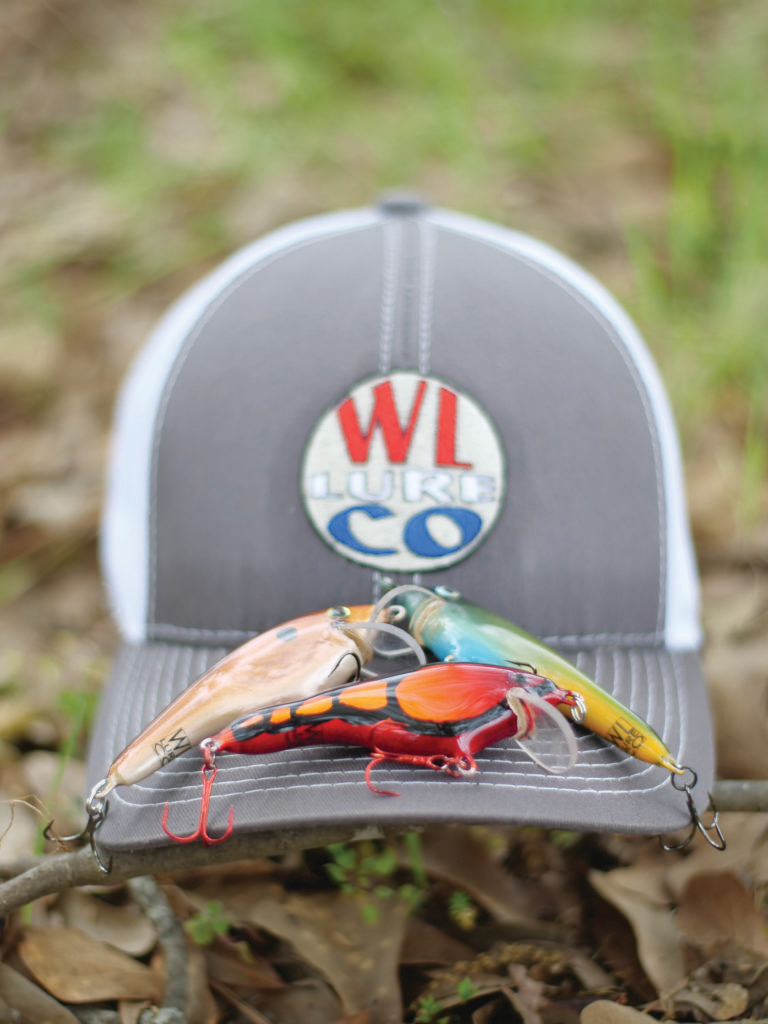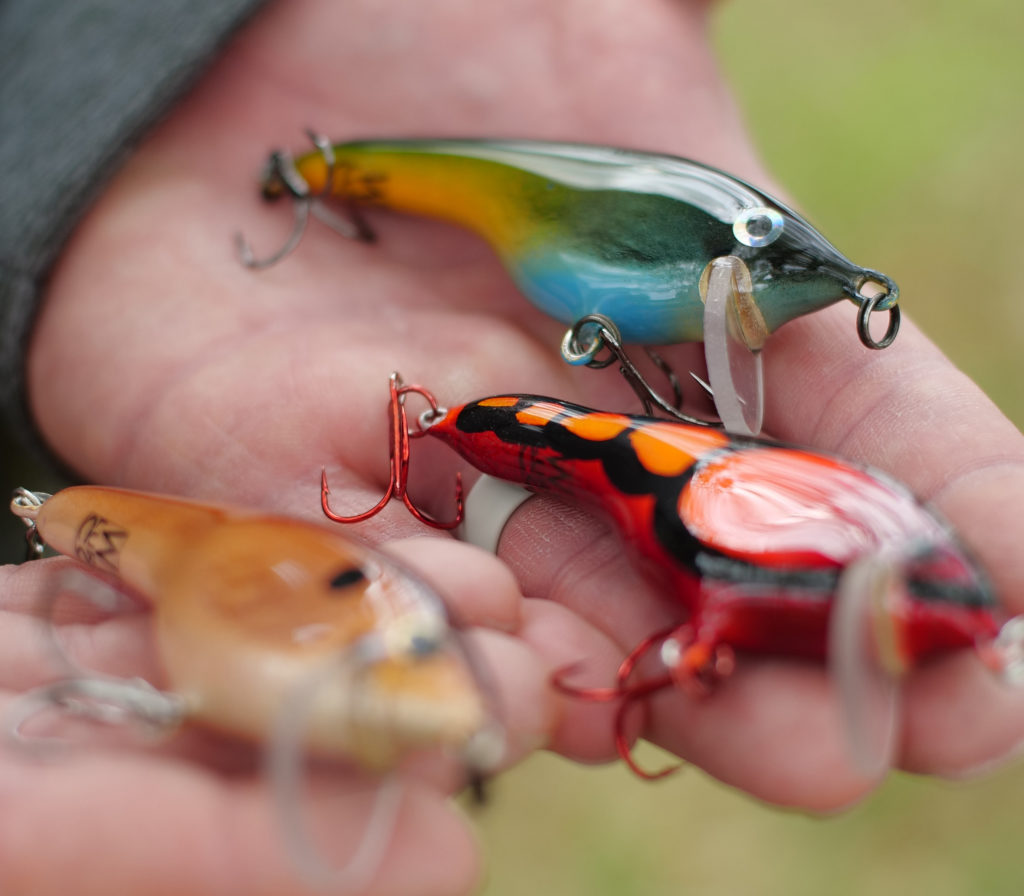Alabama man gets hooked on handmade fishing lures
By John Felsher

Every angler has likely looked at a lure that wasn’t quite right and asked, “What if …?”
Brandon Lee Betterton from Centre doesn’t need to wonder. If he wants a lure to look a certain way or with a particular paint scheme, he just makes a new one and paints it however he wants it to look.
A former lineman for Cherokee Electric Cooperative, Betterton also worked as a safety specialist at the Alabama Rural Electric Association, which publishes Alabama Living. A few years ago, he started his own company, Better Safety and Training, to provide occupational safety and training services nationwide. The job puts him on the road frequently. When he needs to unwind after a long teaching session, Betterton makes wooden and plastic fishing lures.
Living on Weiss Lake, one of the premier crappie reservoirs in the nation, Betterton loves to catch crappie. Naturally, he first tried to make better enticements to fool his favorite fish.
“I started carving lures in 2018,” he recalls. “I tried to make crappie lures, but I just couldn’t get the action down correctly on the small baits.”

Brandon Betterton shows some of the fishing lures he’s made by hand.
PHOTOS BY DANNY WESTON
Then, he turned a sad event into inspiration. His wife’s grandfather died at 93 years old and left a house full of old fishing tackle. Betterton and his wife bought the lake house and started looking through those antique wooden bass lures.
“What piqued my interest in carving lures was my wife’s grandfather had a lot of antique fishing rods, reels, lures and other stuff,” Betterton says. “I started looking at those old-style lures and liked them. One rainy Fourth of July, I just grabbed a knife, a piece of wood and started carving.”
He experimented with carving various designs. When he came up with a shape he liked, he made prototypes. Now, Betterton uses three different sheet metal templates to make two basic styles of crankbaits.
Used primarily to catch largemouth bass, crankbaits can also attract many other species. Differentiating them from other lures, crankbaits come with metal or plastic lips to make them dive underwater and give them action. Some lures also come with rattles, usually tiny glass or plastic cylinders containing small metal balls that make noise when they roll around inside the chamber.
“I make deep-diving crankbaits that are more rounded and flat-sided ones that normally dive to about two to three feet deep,” he says. “I’m still tinkering with prototypes, just trying to figure out the best styles. I’ve made some larger crankbaits that people could possibly use for saltwater fishing, but I have not tried them on fish yet.”
He buys 12-inch blocks of basswood about 1.5 inches wide by 1.5 inches deep. When ready to carve, he puts the chosen template on the wooden block and draws an outline of the lure body. From that, he carves the shapes with a box opener-like straight razor.
“Basswood is about the same density as balsa, but it’s more durable,” Betterton says. “It was a lot of trial and error trying to get the action and size down. It’s something I just have to do by eye. I’m constantly looking at the amount I’m taking off from one side to make sure it’s even on the other side. I try to mimic the game fish on various lakes. For instance, if someone wants to fish Lake Guntersville, I will research and try to make something as close as possible to the fish in that lake.”
After carving, he uses a Dremel tool for rough sanding to get the approximate shape. Then, he uses sandpaper to smooth it out for the final touches. After carving and sanding to get the body shape the way he wants it, he adds components like eyes, hooks, lips and rattles.
“For the lips, I buy real thin sheets of Lexan and I cut the lips by hand or with a jigsaw,” he says. “Then, I sand them to get the profile correct. I scar the Lexan with a blade so it has a bit of surface area retention for the glue. There’s a two-part epoxy outer coat that I put on to protect the paint. I normally do two or three coats of the epoxy. One coat of it is supposed to be equivalent to 60 coats of polyurethane. Once I airbrush it, it’s ready to seal.”

Each carved wooden lure takes about four hours to make. He also buys plastic bodies, adds the components to them and paints them; lures with plastic bodies don’t take nearly as long to make. Usually, Betterton carves about 20 lures at a time and then moves onto the next step. He makes about 50 hand-carved lures a month.
On both body types, some steps, such as gluing and painting, require hours to dry. He can’t hang lures to dry because wet paint will drip down and clump, so he rotates lures slowly and continuously on a rotisserie-type device so the baits dry evenly across the lure body.
“It’s a very tedious process, but I thoroughly enjoy making the lures,” he says. “For me, it’s more about relaxation than anything else.”
Most of his sales come through word-of-mouth, but Betterton does attend events, such as the annual fall festival in his hometown, to sell his baits. Lures range from $5 to $30. For more information, call Betterton at 334-320-3360.ν




